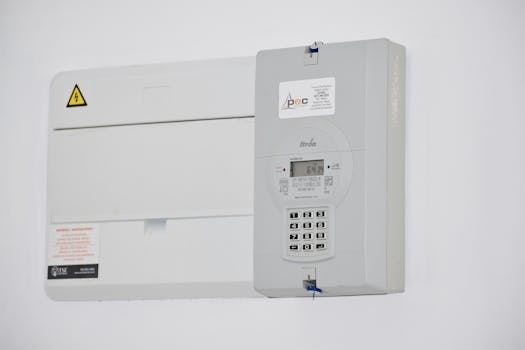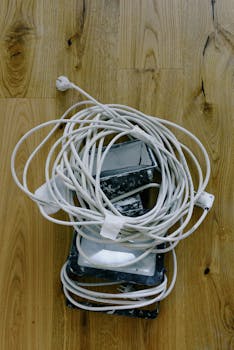Saving Strategies
Best Tips for Saving on Utilities Without Sacrificing Comfort
Cut your bills and stay cozy at home. Explore real-life tips to save on utilities, from heating to water and lighting. Get practical, comfortable savings for any household.
Advertisement
Even small changes at home can bring real savings and add up fast. When you focus on a few tweaks, you’ll start to save on utilities without feeling restricted or chilly.
Rising costs affect everyone, whether you rent or own. That’s why choosing strategies that blend comfort and lower bills matters. Most people want to find a balance—cozy spaces, manageable budgets, and easy routines.
This guide charts practical and achievable steps. Discover exactly what works, what to avoid, and which habits you can set in motion today. Let’s build lasting change without any sacrifice of quality or peace at home.
Cut Heating and Cooling Bills While Staying Cozy
Lowering home energy costs is possible when you refine a few routines. With targeted steps, you can keep rooms warm or cool and still save on utilities month after month.
Let’s zero in on real examples: draft-proofing, thermostat scheduling, and zoning make homes efficient. Each method fits normal habits and can be set up in a single afternoon.
Draft-Proofing Creates Even Temperatures All Day
Sealing cracks around windows and doors stops cold air from sneaking in. Imagine using weatherstripping tape—press it along moving sections, then run your hand to feel for any breeze left. Finished right, this trick saves warmth in winter.
Draft stoppers for doors work just as well. Slide a foam tube along the bottom or use a weighted fabric roll on the inside. With these in place, you’ll notice rooms heat faster—and the effort takes under ten minutes per doorway.
If you spot a large cold patch near the baseboard or wall, check for missing caulk. Caulking gaps, especially on outside walls, stops air leaks, making your heating work less. Work section by section and reassess with your hand afterward.
Thermostat Scheduling Adapts Home Comfort to Your Hours
Programmable thermostats let you change temperatures by the clock. Set them to drop while you’re asleep or at work and rise an hour before returning. Script your settings: weekdays 68°F daytime, 60°F nights, weekend daytimes warmer if you’re home.
Smart thermostats add learning features. Over one week, these devices detect movement and adjust automatically, so you rarely have to lift a finger. After a month, check utility bills and compare—they’ll almost always dip if you use these settings tightly.
For manual thermostats, try taping a reminder above the panel. You might jot: “Turn down at 10 pm, up at 6 am.” Revisit settings with the seasons, especially during big weather pattern changes.
| Method | Difficulty | Time Required | Best For | Next Step |
|---|---|---|---|---|
| Weatherstripping | Easy | 1 hour | Windows/Doors | Pick up supplies at a hardware store |
| Programmable Thermostat | Medium | 30 minutes setup | Main rooms | Schedule weekday/night cycles |
| Caulking | Medium | 2-3 hours | Baseboards/Walls | Check for gaps, seal as needed |
| Draft Stoppers | Easy | 10 minutes per door | External/internal doors | Position and check fit |
| Zoned Heating | Advanced | 1-2 days | Large houses, finished basements | Consult HVAC for system upgrade |
Apply Lighting Changes for Immediate Savings
Switching to smarter lighting helps households cut costs swiftly. Choose bulbs and controls that match your schedule, habits, and style to seamlessly save on utilities with no tradeoff.
LED upgrades, dimmers, and smart plugs are simple fixes, but stacking these methods maximizes your results at almost zero hassle. Plan room by room for maximum benefit.
Swap to LEDs and Schedule Smart Use
Replace any remaining incandescent or halogen bulbs with LEDs. This move can reduce lighting expenses by 75 percent. Choose daylight or warm white to suit the mood—dining rooms might get cozy tones, kitchens brighter ones.
- Change out the most-used bulbs first to see an immediate impact.
- Use a step stool and gloves for safe removal and installation.
- Dispose of old bulbs per local recycling rules to protect the environment.
- Label switches in shared spaces so everyone uses energy-saving settings.
- Log dates when you swap bulbs and revisit each room every year.
Dimmers and timers extend savings further. For study rooms or hallways, install dimmers and drop to half-brightness. In the evenings, set timers to turn off porch and garage lights, and watch your costs shrink each billing cycle.
Layer Controls With Smart Plugs and Sensors
Add smart plugs in lamps that tend to get left on. You can automate off/on or control by phone. For nightlights, use sensors that only power the bulb as needed for motion.
- Plug living room lamps into smart outlets so they turn off when you leave.
- Choose sensor nightlights for bathrooms and hallways where constant use isn’t required.
- Pair lamps with voice assistants if you like hands-free routines.
- Set “bedtime” or “away” routines to avoid wasted lighting overnight.
- Experiment with vacation modes that cycle lights for security when you’re traveling.
Layering lighting controls fits seamlessly into any lifestyle. You get convenience, ease of mind, and a real drop in wasted kilowatt hours—and your comfort never takes a hit.
Fine-Tune Appliance Use for Less Waste and Cost
Paying attention to how—and when—you use big appliances slashes both your environmental impact and your bills. Simple tweaks save on utilities year-round.
Timing matters. Many areas charge less for energy outside peak hours. Running the dishwasher or laundry early or late, not mid-afternoon, directly cuts costs.
Switch to Cold Water and Full Loads for Laundry
Laundry is a big contributor to energy bills, but switching to cold water settings preserves clothes and cuts hot water heater use by about 90 percent per load. Aim to wait until you have a full drum rather than doing small, frequent washes.
Stacking these changes will net double the impact. For example, do a week’s worth on Sunday mornings, not scattered daily. Tell your housemates: “Let’s run laundry Sunday AM, cold wash, only full loads”—hang a note by the machine the first few weeks.
Line drying when possible drops costs even further. Start with small things—kitchen towels or delicates—using a collapsible rack indoors if needed. In pleasant weather, hang sheets on an outdoor line for sun-dried freshness and zero extra expense.
Give the Dishwasher a Boost Without Hefty Bills
Modern dishwashers use far less water and energy than washing by hand, especially when run full. Use the air dry setting if available. Load it completely, scrape plates instead of rinsing, and choose normal—not heavy—cycles for daily dishes.
When dinner wraps up, say: “Let’s fill and use the eco-cycle before bed.” This routine pairs with off-peak rates and uses the appliance’s strengths. If you need overnight washing, program the cycle delay to start after 8 PM.
For dishwashers ten years or older, compare your kilowatt hours on the sticker to Energy Star models. Upgrading can save 20 to 30 dollars per year, which covers the cost over time through lower monthly bills.
Manage Water Usage Without Sacrificing Flow
Reducing water and related energy costs never means giving up a satisfying shower or clean kitchen. Modern fixtures and simple habits combine comfort with savings.
Prioritize changes where they’ll be felt least: showers, toilets, and kitchen taps. A few accessible swaps deliver noticeable savings and can become long-term habits after just a few weeks.
Upgrade to Low-Flow Fixtures for Major Payoff
New low-flow showerheads and faucets work better than old weak tricklers. Search for options with 2.0 gallons per minute or less—they deliver strong pressure due to built-in aerators, not lower volume.
Install them with Teflon tape and a wrench, following the package instructions. Hand-test the flow to ensure there’s no leak and the spray feels right. These upgrades are often available at local hardware stores and sometimes through city rebate programs.
Many modern toilets feature dual flush, with choices for light or full. If replacement isn’t possible, drop a filled bottle in the tank to displace water, which lowers usage with each flush. Check monthly for leaks: listen for running or do a dye test in the tank.
Adopt Mindful Water Habits in Every Room
Turn off taps while soaping hands or brushing teeth. Time showers to a favorite song, setting a gentle limit without it feeling like a chore. These habits extend naturally to kids with small reminders and playful cues.
When washing dishes by hand, fill one basin with wash water and another with rinse, not constant running flow. This single change saves several gallons with every meal’s cleanup. Place a reminder sticker above the sink for the first month if needed.
For gardening or outdoor hoses, water early in the morning or late in the evening. This timing reduces evaporation and makes every drop count. Use soaker hoses or drip systems in gardens for targeted, low-waste watering.
Keep Comfort High While Lowering Entertainment and Electronics Waste
With screens and devices everywhere, small changes shrink standby waste and lower bills. You won’t notice a difference—apart from what you save on utilities month by month.
Everyone can take part. Try a day unhooking, replugging, or automation, and make it into a mini family project. Share the results for buy-in and visible change.
Tame Vampire Loads With Smart Power Strips
Vampire loads are small drips of energy from devices left on or plugged in—think chargers, game consoles, TV boxes. Plug clusters of electronics into a smart strip that cuts power completely when not in use.
Set up a script, for example: “TV setup off at 11 pm every night.” Label the smart strip so everyone understands what it does, and create a routine to reset in the morning or as needed.
Use a simple analogy: smart strips are traffic lights for power. When they’re red, nothing flows. Teach kids and adults the same habit for all gaming or workstations—one switch, instant cut-off, real savings.
Dial Down Device Brightness and Sleep Settings
Adjust computers, tablets, and TVs to the lowest comfortable brightness—this drops power use instantly while staying easy on the eyes. Set automatic sleep timers, so screens snooze after 10 minutes of no use.
For game consoles, enable auto power-off after short idle periods. Write down a checklist: “Monitors 30%, TVs night mode, all after 10 pm.” This routine, just like brushing teeth, becomes easy muscle memory after a few days.
Store device chargers out of sight in a central basket so you’re reminded to unplug them nightly. This tiny tweak prevents unconscious waste and, as the charging basket empties, signals devices are fully powered and ready for use.
Get the Whole Household Onboard for Lasting Savings
Utility-saving routines stick best when everyone contributes. Turn techniques into shared goals and habits, so they’re not a solo effort—and you’ll consistently save on utilities together.
Kick off with one shared meeting. List ideas, set clear markers (like biweekly bill checks), and divvy up actions. Post charts or notes in high-traffic spots like the fridge to keep the momentum alive.
Use Visible Reminders and Positive Triggers
Place sticky notes at light switches for “last out, switch off” reminders. If you install a new low-flow showerhead, announce it: “See how it feels!” Feedback keeps engagement high.
Create reward systems, too. Set a treat night after each month of lower bills—bake cookies or plan a movie marathon. As positive habits form, scale back reminders but keep celebrations going when milestones are hit.
Review bills monthly together. Highlight savings and compare to previous seasons. Let each member suggest a tweak for next month, so all voices shape your home strategy.
Rotate Responsibilities and Mix Up Routines
Change up chores—who unloads the dishwasher, who checks thermostat settings, who swaps air filters. By rotating, everyone learns each step, and no one gets tired of a single role.
Set a family reminder: “Switch on cost-cutters Sunday night!” Include everyone by age with tailored tasks—older kids can check fridge seals; younger kids can close curtains. Get creative and make it a fun routine change-up.
Monthly, swap “roles” so it stays playful. Record your favorite “hacks” and keep the best ones. Rotate devices or routines so savings don’t plateau as new habits take root over the long run.
Smart Upgrades That Pay for Themselves
Some investments deliver continual savings year after year—and the comfort is instant. Choose upgrades that promote efficiency while keeping the at-home experience effortless.
Focus on insulation, high-efficiency appliances, and connected devices. Putting money up front will slowly but surely help you save on utilities, paying off the initial cost over months or a few years.
Pinpoint High-ROI Upgrades for Every Home
Add insulation in attics or crawl spaces first. This step works like throwing a cozy blanket over the house—it traps pleasant temperatures and shrinks spikes in usage, especially during seasonal weather.
Upgrade to Energy Star-rated washers, fridges, and HVAC units when it fits your budget. Review rebate offers from local utilities to help offset initial expenses. Every efficient device brings your home’s average usage down immediately.
Install a smart home hub if you enjoy automation. With one dashboard, you control lighting, heating, and major appliances. Review reports month to month, using the insights to make tiny adjustments and maximize savings further.
Weigh When to DIY or Call a Pro
Many upgrades, like caulking windows, applying weatherstrips, or swapping showerheads, are simple DIY projects. These can save a few hundred dollars a year and take a free afternoon or weekend.
Major work, such as adding attic insulation or a new HVAC, merits hiring professionals. Get project estimates in writing. Plan upgrades in the off-season (spring or fall) when service providers are less busy and rates can be lower.
If you weigh the overall payback, most pro-led upgrades pay off over four to six years, while DIY tweaks often start providing a return that very same month. Record costs and savings in a spreadsheet for insight and motivation.
Frequently Asked Questions
What’s the single easiest way to start saving on utilities? Start by replacing the five most-used light bulbs with LEDs and seal any window drafts with weatherstripping. You’ll notice real change in comfort and in your very next bill without a major lifestyle shift.
Do smart thermostats save money without sacrificing comfort? Smart thermostats automate temperature schedules based on your habits. Set it for lower temperatures when away or asleep. The device learns preferences, meaning you enjoy steady comfort and smaller bills almost automatically.
Should I unplug all electronics when not in use? Use smart power strips in main living and work areas. These strips automatically cut power to multiple devices, avoiding tedious unplugging. They help stop energy drips from standby electronics and require minimal extra effort.
Are low-flow showerheads actually comfortable? Today’s low-flow showerheads maintain strong pressure with less water. You won’t notice a drop in comfort, especially when using options with aerators for even spray. Installation is quick, and results are visible in the next bill cycle.
How can renters save on utilities? Renters should focus on draft blocking, portable LED lamp upgrades, window coverings, and smart plug use. All these can move with you and don’t alter the physical property—but together, they deliver lower bills and a more comfortable living space.





